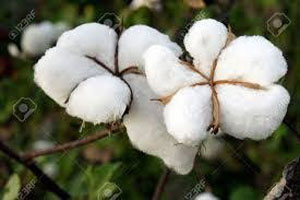
Maharashtra traders, ginners urge for removal of cess on cotton
YarnsandFibers News Bureau 2017-11-04 12:00:00 – MumbaiThe Agriculture Produce Market Committee (APMC) charge a market cess of 1.25% of the value of the cotton brought to the market. If the value of cotton is Rs 4,500 then the cess comes upto Rs 50 which is not logical at all. The members of the Cotton Association of India (CAI) and Maharashtra Cotton Ginners Association ( MCGA) met chief minister Devendra Fadnavis seeking the removal of Agriculture Produce Market Committee (APMC) fees.
Moreover, usually traders factor in the market cess when they make payments to farmers for the cotton purchased from them, so farmers end up getting less money. This kind of cess is not needed.
Industry observers pointed out that market committees do not provide any extra amenities to charge this kind of cess which is a major cost to the ginners. The CM assured the delegation that mandi fees will be withdrawn shortly in the state.
As per ministry of agriculture, cotton had been sown on 111.55 lakh hectares till July 28, as against 92.33 lakh hectares for the same time last year, indicating an increase of close to 21 % in the acreage.
Maharashtra has registered kharif cotton sowing of over 38.47 lakh hectares, while in Gujarat the area stood at 25.84 lakh hectares.
Cotton prices at present are around Rs 4,400 per quintal to Rs 4,500 per quintal. Cotton prices in Maharashtra had firmed up after the Gujarat government announced a bonus of Rs 100 per 20 kg for cotton (Rs 500 per quintal) to be paid to farmers.
Maharashtra cooperation minister Subhash Deshmukh said that although cotton prices have not touched the minimum support price ( MSP) levels yet, they have already directed Agriculture Produce Market Committees to commence online registrations of farmers for the purchase of cotton from October 18 for the 2017-18 cotton season.
Cotton MSP has been raised by Rs 160 per quintal to Rs 4,020 per quintal for medium staple cotton and Rs 4,320 per quintal for long staple cotton.
CCI and Nafed are the two agencies appointed by the government to extend the necessary marketing support to the cotton growers in selling their cotton produce at the most competitive prices in the various market yards in all cotton-growing states. These in turn appoint sub-agencies to procure cotton at the local level as well.
Pradeep Jain, president, MCGA said that cotton prices are unlikely to touch MSP levels until December when arrivals increase. At present, arrivals have commenced in steady numbers to the tune of 25,000 to 30,000 bales a day.
In India, most of the arrivals will be between November 2017 and February 2018. There might not be sufficient buyers in the market during this period and only those who have financial resources will buy cotton in bulk. There are possibilities of more exports too. In order to ensure that farmers get remunerative prices, CCI should step in and buy 100 lakh bales during the peak season.
J Thulasidharan, president of Indian Cotton Federation said that with India expecting cotton production of 400 lakh bales this season (October 2017 to September 2018), the Cotton Corporation of India should procure at least 100 lakh bales during the peak arrival months so that prices remain stable.
In a memorandum to the Prime Minister, Thulasidharan said that according to the International Cotton Advisory Committee, cotton production is expected to be 75 % in surplus during the current year globally. This is likely to impact prices, especially for farmers in the country.
Market Intelligence
Ask for free sample Report

experience
Customer Base
dedicated team
Countries Served Worldwide









